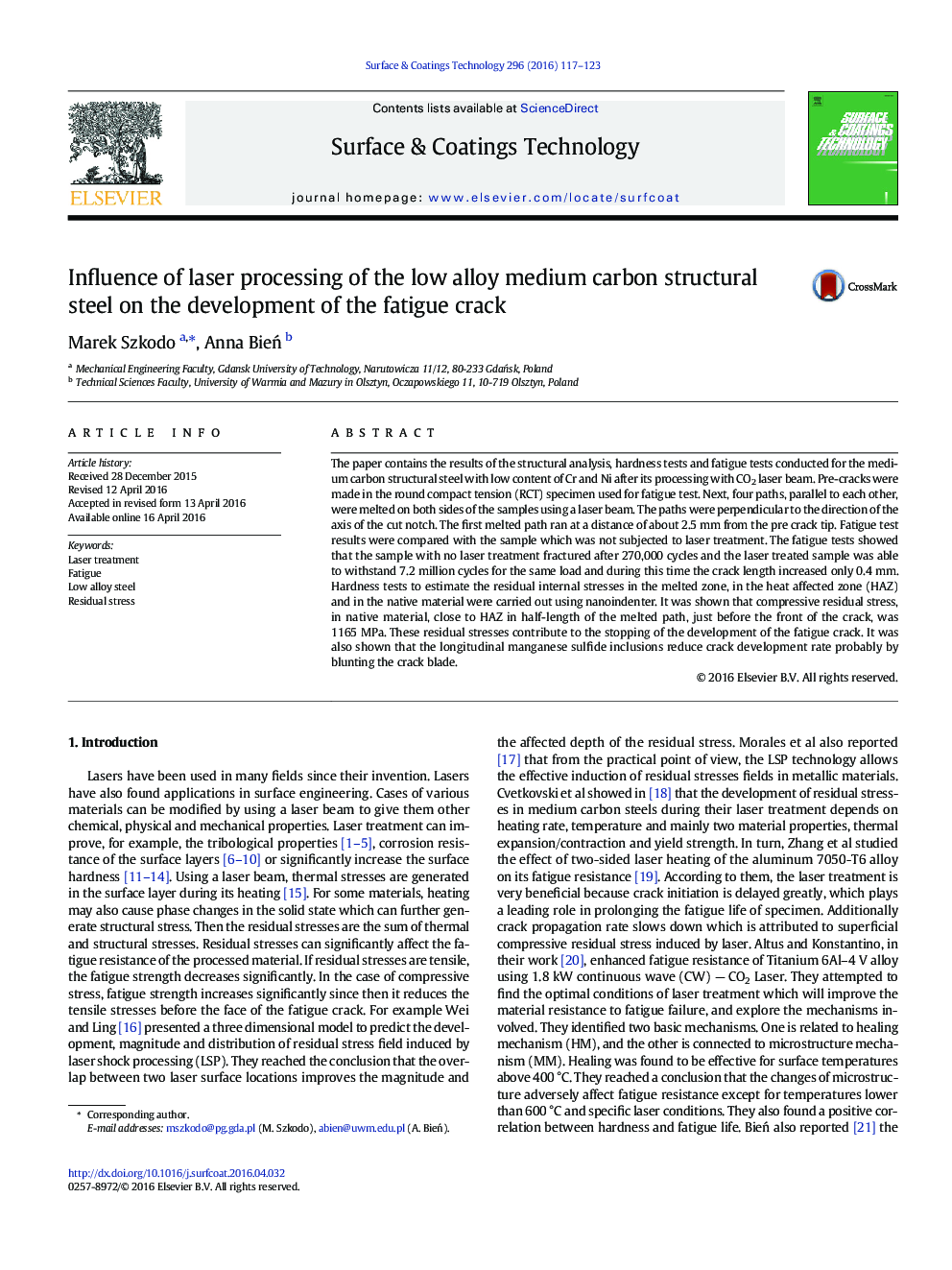| کد مقاله | کد نشریه | سال انتشار | مقاله انگلیسی | نسخه تمام متن |
|---|---|---|---|---|
| 1656505 | 1517583 | 2016 | 7 صفحه PDF | دانلود رایگان |
• Round Compact Tensile specimen was melted on multiple paths using a CO2 laser beam.
• Laser treated sample withstand 7.2 mln and no treated sample only 0.27 mln cycles.
• Laser treatment induced residual compressive stress in native material.
• Residual compressive stress was 1.165 GPa in the vicinity of the crack tip.
• Sulphides of manganese significantly reduce the stress before the tip of the crack.
The paper contains the results of the structural analysis, hardness tests and fatigue tests conducted for the medium carbon structural steel with low content of Cr and Ni after its processing with CO2 laser beam. Pre-cracks were made in the round compact tension (RCT) specimen used for fatigue test. Next, four paths, parallel to each other, were melted on both sides of the samples using a laser beam. The paths were perpendicular to the direction of the axis of the cut notch. The first melted path ran at a distance of about 2.5 mm from the pre crack tip. Fatigue test results were compared with the sample which was not subjected to laser treatment. The fatigue tests showed that the sample with no laser treatment fractured after 270,000 cycles and the laser treated sample was able to withstand 7.2 million cycles for the same load and during this time the crack length increased only 0.4 mm. Hardness tests to estimate the residual internal stresses in the melted zone, in the heat affected zone (HAZ) and in the native material were carried out using nanoindenter. It was shown that compressive residual stress, in native material, close to HAZ in half-length of the melted path, just before the front of the crack, was 1165 MPa. These residual stresses contribute to the stopping of the development of the fatigue crack. It was also shown that the longitudinal manganese sulfide inclusions reduce crack development rate probably by blunting the crack blade.
Figure optionsDownload high-quality image (86 K)Download as PowerPoint slide
Journal: Surface and Coatings Technology - Volume 296, 25 June 2016, Pages 117–123
